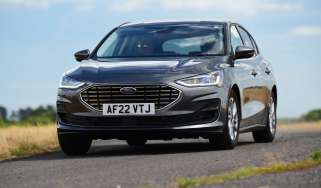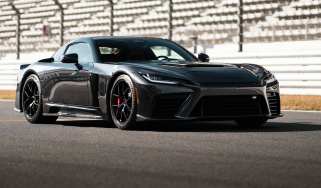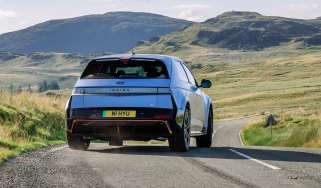The Ford Focus is dead: how the VW Golf rival redefined everyday driving
After almost three decades on sale, production of the Ford Focus has come to an end. Here’s why that matters more than you might think
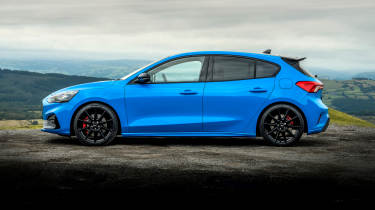
Farewell Ford Focus. Its 27 year run has come to an end three years after Ford said its time was up. 12 million sales in under 30 years? That’s quite the achievement, although to be expected because when launched it was the next car down the hyper-successful Ford product line that saw this successor to the Escort (itself no stranger to sales successes) dominate the sales charts and our roads. It was part of a family and the roadside furniture that included the equally dominant Mondeo and Fiesta. It was from an era when Ford could do little wrong.
But it was more than simply a sales hit, it proved to the world that a car sold to the masses didn’t need to be dull to drive. Multi-link independent rear suspension lifted it above the Astra and Golf, provided it with a platform that meant it drove with a togetherness and sophistication traditionally left for the big boy premium brands.
> Used Ford Focus ST (Mk4, 2019-2025) review – Ford has killed its last remaining hot hatch
An entry level Mk1 Focus 1.6 LX had a dynamic quality that required a Renault Sport badge to beat. Volkswagen’s Mk4 Golf might have made Jac Nassar insist the Focus’s dashboard was covered over at its Frankfurt show world premiere after seeing the quality of the new German rival, realising his new global big seller was a bit, well, crap when comparing soft feel plastic trim. But drive the Ford and VW back to back and there was no comparison to make, the Blue Oval beat the icon in every single dynamic department. The genius of Richard Parry-Jones was experienced by millions, how many appreciated his work or understood why their humble hatchback rode and steered as well as anything BMW had to offer, if not better, will never really be known.
It wasn’t all plain sailing for the Focus and it never really got to grips with being a hot hatch. There was the Focus 2.0 that introduced traction control and little else. The ST170 was a good ‘un - lively, with a get up and go character enjoyable at all speeds but not a benchmark hot hatch. The last 2.3 STs were better than okay but never great; although the Performance and ST Editions added some last of the line spice. But once the Mk5 Golf GTI swept by the Ford never quite caught up and the 2.5-litre five-pot engined STs had all the torque but struggled to do the walk.
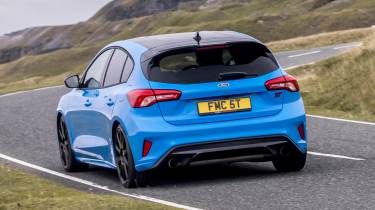
And the Focus RS models were a troubled distraction. The Mk1 was inconsistent, the Mk2 bloated and the Mk3 frantic and a little confused as to what it was meant to be: a 21st Century Subaru Impreza Turbo and Mitsubishi Evo all-weather hyperhatch hero, or a lithe and pointy RenaultSport Megane rival. And it was neither really. Good in doses, but rarely truly memorable.
It was the regular models that defined the Focus. They delivered beyond expectation in all areas from the aforementioned dynamics to those early, zingy Zetec engines delivering on a brief and providing millions of motorists the perfect tool to cover the miles they needed to do and to complete the journeys that needed to be undertaken. No fuss, no drama, just a quiet confidence that this was all the car we all simply needed. It was never the most exciting, repetitive daily grind driving rarely is, but the Focus approached it with a quality that lifted it beyond the norm whether you noticed or not.
Like all big sellers there were issues. Don’t mention ‘wet belt’ to owners of 1-litre and 1.5-litre Ecoboost engined models, but find a good Focus and it’s a car that will be as faithful as a hungry labrador.
Ford calling time on another of its most famous nameplates and most successful models, just as it did with the Mondeo and Fiesta, is part of the American company’s desperate quest to remain a player in Europe’s passenger car segment. Its switch to electric vehicles has, it’s fair to say, not been a roaring success. Mustang Mach-E, Explorer and Capri are proving poor substitutes that simply don’t resonate with Ford’s core customer base despite the use of established nameplates. The Mach-E brings confusion with consumers assuming it’s an electrified muscle car, the Capri likewise albeit with less muscle. The Explorer nearly sank Ford in the US and is barely known this side of the Atlantic other than by a niche that bought the late Nineties US imported SUV that made a TVR Griffith look frugal.
We’re unlikely to see the highs of the Focus’s success again from Ford, more pertinently we're unlikely to see the likes of the Focus again, either, and that’s the real shame.
How it began: Ford Focus (Mk1)
When a humble Ford set a new benchmark for hatch dynamics
There have always been unassuming, everyday cars that are nice to drive. Italian and French companies used to be especially good at this, but there was always a sense that the spring in the step of a Fiat Brava or Peugeot 306 was a happy accident because its creators liked driving. This wasn’t the sort of thing Ford did. Ford was data-driven, furiously analysing and researching and then relentlessly paring costs. Hence the apocryphal story that a standard Ford job interview question was: ‘What do we make here?’ Successful candidates were the ones who replied ‘money’.
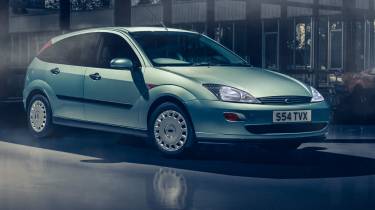
Of course, Ford engineers knew that rival cars were more fun to drive. When they were developing the Mk3 Fiesta they studied the Peugeot 205 to discover its secrets, even filming one with slo‑mo cameras to dissect the nuances of its delightful handling. But then carefully researched practicalities like cheap servicing and light steering got in the way and the ’89 Fiesta arrived as a woolly sluggard, beaten only for dreariness by the all-new Escort of the following year. Yet these grey mush machines did us a favour because they attracted such lukewarm response that Ford of Europe, under newly appointed chief engineer Richard Parry-Jones, decided it could do better. Making cars that were nice to drive became an official corporate position, based on Parry-Jones’s belief that even less-enthusiastic customers felt more confident and therefore happier in a car that was crisp and responsive. This led to the Mondeo of 1993, then the Ka, the Puma and finally, in the year evo was born, the pinnacle of Ford’s let’s-not-be-crap policy: the Mk1 Focus.
The first shock of the Focus was the way it looked. This was a staggeringly bold bit of work from a company that used to think green bumper piping was brave. Better yet, the driving experience was as sharp as the looks. One of the keys was the rear suspension, a trailing-arm set-up with upper and lower lateral links labelled ‘Control Blade’ by Ford. The result was the Focus drove beautifully with a firm but supple ride, crisp turn-in and a lovely, clean feeling to the steering. Rumour was that Lotus had some early input into the chassis and you could believe from its manners that the Focus had spent a little time in Norfolk. Equally impressive was the sense that all the controls had been carefully tuned to demand an equal effort, giving the car that sense of polished integrity you usually got only from a Porsche or a BMW. But the Focus wasn’t a Porsche or a BMW, or even a Fiat or a Peugeot. It was a Ford. And at the time it was a revelation. – Richard Porter, evo issue 315
